The Pick Up Put Down Method: A Gentle Sleep Training Guide

This post may contain affiliate links; please see our terms of use for details.
- Pick Up Put Down sleep training is most effective for babies between 3 and 8 months old.
- This method does not require you to leave your baby to cry it out.
- Pick Up Put Down can be used both at bedtime or for naps.
Has your baby become used to being cuddled to sleep, but your back aches and your arms are getting tired? Perhaps your little one uses a pacifier to get to sleep but wakes when it falls out? Are you dealing with early wakings or super-short naps?
The Pick Up Put Down method can help to solve these problems—and without the need to leave your baby to cry it out.
A great baby sleep routine is every parent’s ultimate goal. We all know well-rested babies are happier and more content. It turns out well-rested parents (while rare) are much happier too! Sleep training can help the whole family get the precious sleep they need to be their best.
What is the Pick Up Put Down Method of Sleep Training?
The Pick Up Put Down method is a gentle technique to sleep train babies popularized by Tracy Hogg in Secrets of the Baby Whisperer. It aims to help your baby learn to fall asleep without needing props or cuddles. You can use this method to extend naps, build successful sleep routines, and stop your baby from waking too early.
While Pick Up Put Down is considered a gentle sleep training method since you never leave your baby to cry it out, it’s not entirely a no-cry method. It involves putting your baby down to sleep and picking them up again if they start to cry. The trick is to do this repeatedly until they settle.
How Does the Pick Up Put Down Method Work?
When tired, the last thing you need is an overcomplicated method of sleep training. Happily, Pick Up Put Down is a simple technique that will be easy to remember at 2 am. The steps are as follows:
- Wait. If your baby starts to fuss, don’t rush to pick them up straight away. Stop, wait, and listen. Give them a moment to see if they can self soothe.
- Shush. If they don’t settle, rest your hand on them, pat them gently, and try shushing. This will reassure them that you’re there. This part of the technique is why it’s also known as the Shush-Pat method.
- Pick-Up. If your baby isn’t calmed by shushing, pick them up for a cuddle.
- Put-Down. The second your baby stops crying, put them down. Place them on the mattress even if they start to fuss on the way down. Leave your hand on their tummy and speak softly to reassure them that you’re there.
- Repeat. If your baby starts to cry again, keep picking them up and putting them down. Do this until their crying turns to a whimper or grumble.
- Comfort. Rest your hand on them and shush or speak softly.
- Leave. Once your baby has entered a deep sleep, leave the room. Watch out for squeaky floorboards!
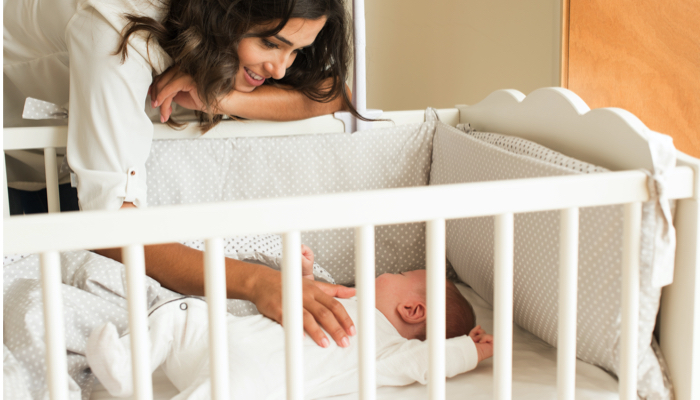
At What Age Can I Start Using the Pick Up Put Down Method?
The Pick Up Put Down sleep training technique is best used between the ages of 3 and 8 months. It’s important to know that there are slight differences in the technique according to your baby’s age.
| Age | Guidance |
| 0-3 months | Your baby is too young for the Pick Up Put Down sleep training method. |
| 3-6 months | A great time to start sleep training. Try shushing and patting your baby before picking them up. It may be enough to calm them. |
| 6-8 months | Shushing and patting may result in an overstimulated baby and could make it harder for them to settle. Instead, place your hand on your baby to reassure them that you are there. Begin picking them up and putting them down if they are not calmed by your hand. |
| 8+ months | The method is less effective in older babies. That’s because they’re more physically developed and may be able to stand by themselves. Try not to pick your baby up if they cry. Instead, lay them down facing away from you each time they stand. Keep your hand on their back and speak softly to reassure them that you are there. |
How Long Does the Pick Up Put Down Method Take?
The first night you try Pick Up Put Down sleep training is likely to be a long one. You may need to pick your baby up and put them down over 100 times before they are finally asleep. The average amount of time this takes is 20 minutes, but it could take your little one over an hour.
Each night that follows is likely to be faster until your baby can fall asleep on their own. You should start to see results within the first few days. There should be some significant improvement in a week.
What If the Pick Up Put Down Method Isn’t Working?
Rachel Mitchell, certified Pediatric & Maternity Sleep Consultant and founder of My Sweet Sleeper and Sweet Sleep Academy, recommends Pick Up Put Down sleep training “for children who are attached sleepers and have more difficulty with independent sleep and regulation (which is very normal and common). For these babies Pick Up Put Down can help avoid a lot of tears and provide comfort when most needed.”
However, the Pick Up Put Down method isn’t for everyone. Rachel notes that this style of sleep training “can also be overstimulating at times, specifically for sensitive sleepers. With some babies picking up and putting down can cause more sleep disruption and prevent the child from falling asleep if they are highly sensitive.”
If you have seen no progress and your baby is still fighting sleep after a week, Rachel recommends “soothing them while they are in the crib by rubbing their head, their back, promoting hand sucking or the pacifier, holding their hand, etc. Providing verbal and physical soothing without picking up, unless the child becomes very upset.”
You may also want to look at other sleep training methods like the fading method or chair method to solve your baby’s sleep problems instead.
Is the Pick Up Put Down Method Cruel?
As your baby gets used to Pick Up Put Down there’s likely to be crying. However, you’ll be there with them through it all, and at no point will they feel abandoned. For this reason, Pick Up Put Down is considered to be more gentle than something like the Ferber method.
Multiple studies have shown no negative consequences of sleep training. In the long run, a good routine, a rested baby, and a happy parent will result in far fewer tears than it took to sleep train.
Who Should Use the Pick Up Put Down Method for Sleep Training?
If you are a parent or caregiver helping a baby older than 3 months, this could be the sleep training method for you. Particularly if your baby is experiencing any of the following issues:
- Only falling asleep when held, cuddled or rocked
- Requiring movement in a stroller or car to fall asleep
- Over-reliance on props like pacifiers
- Waking too early in the morning
- Waking too early from naps
- Struggling to fall asleep at nap time
- Lacking a routine
Does the Pick Up Put Down Method Work for Naps?
Yes! This sleep training method can help your baby nap and has been successful with toddlers too. Use the technique in the same way as at bedtime.
You can also use it to help extend naps. Try it if your little one is waking too early and is still clearly tired after a nap. Use the technique when they first wake and see if it helps to get them back to sleep.

FAQs
What If My Baby Keeps Waking Up While Using the Pick Up Put Down Method?
If you are struggling to get your baby to sleep, think about their sleep routine and environment. You might find a solution before giving up on the Pick Up Put Down method.
Sleep Routine. There is no set sleep routine for babies as every baby is different. For example, your baby might feel relaxed after a bath. Or they find bath time exciting and overstimulating. The first step is to find the activities that your baby finds soothing. This could be a bath and a story or a massage and a lullaby. Experiment and see what works.
When you have your calming activities sorted the key is consistency. Start the bedtime routine at the same time each day, before your baby becomes overtired. Dim the lights and speak softly to signal the start of the routine. The goal is to have your baby relaxed and sleepy before you begin sleep training.
Sleep Environment. There are lots of things about your baby’s room that could be affecting their sleep. Ideally, the room should be cool and comfortable—between 68° and 72°F is recommended. You should also try to block out natural light as it can affect their circadian rhythm. Black-out blinds are helpful for this. Finally, noises from outside can disturb your baby’s sleep. A white noise app or machine can be a really useful solution.
How Long Should a Baby Cry When Put Down For a Nap?
There is no perfect answer to this question as the experts are not yet in agreement. Many parents feel comfortable for up to 5 minutes, some are happy to wait longer and others aim for no crying at all. However, with this sleep training method, your baby is never left to cry. You will stay with them until they are in a deep sleep.
Remember you are the one who knows your baby best and can choose the technique that’s right for you both. With any luck, you both will be getting some quality rest soon!
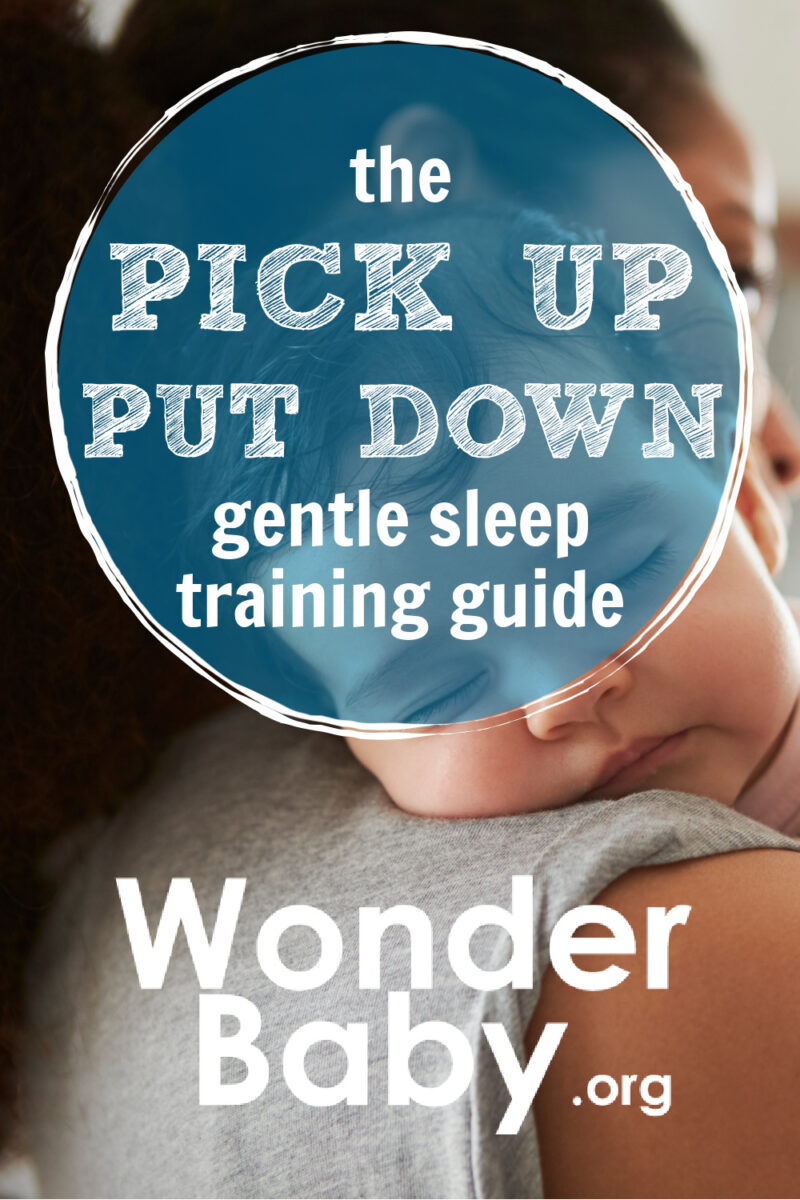
Related Posts
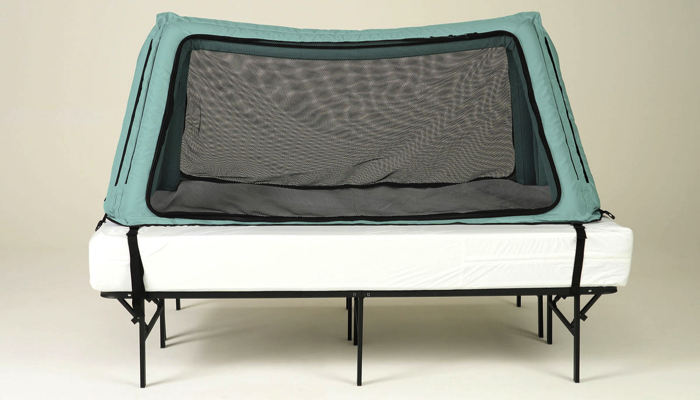
Sleep, Special Needs
Safe Place Bedding Travel Bed Review
Traveling with a special needs child can be stressful! Having a safe, durable, and easy to use travel bed can make traveling so much easier!
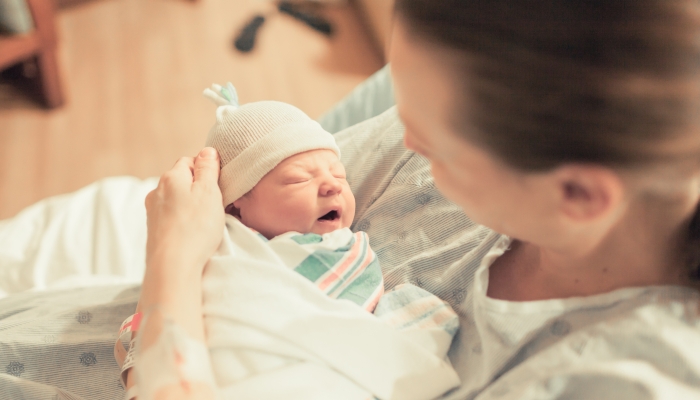
Sleep, Special Needs
Sleep Regimen for Premature Babies: Special Considerations
It can take premature babies much longer than their full-term peers to sleep for long stretches. A preemie sleep schedule may encourage better sleep.
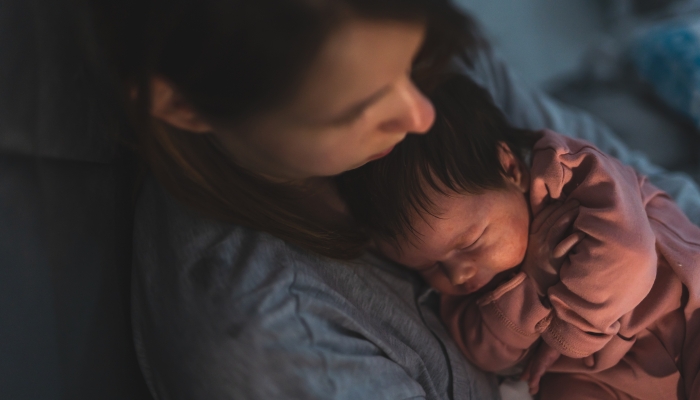
Sleep
Mastering the Bedtime Routine: 3 Tips for a Peaceful Night’s Sleep
From around six weeks, a newborn bedtime routine can help your baby learn the difference between day and night and prepare for a restful night’s sleep.